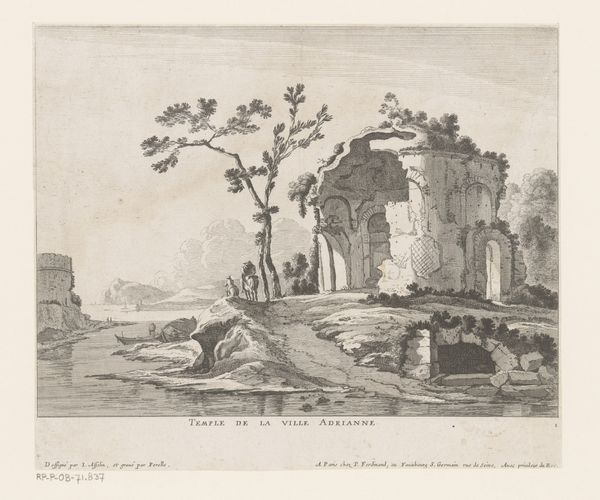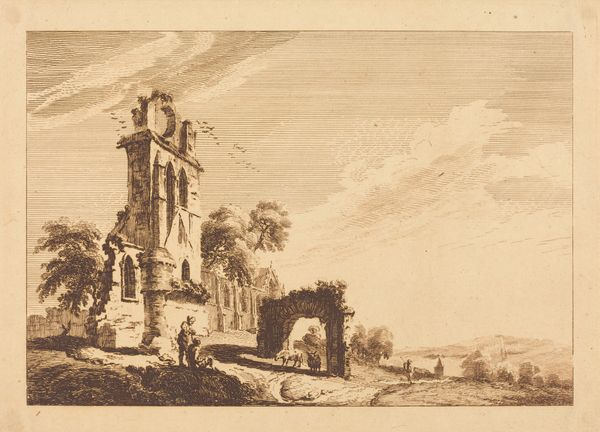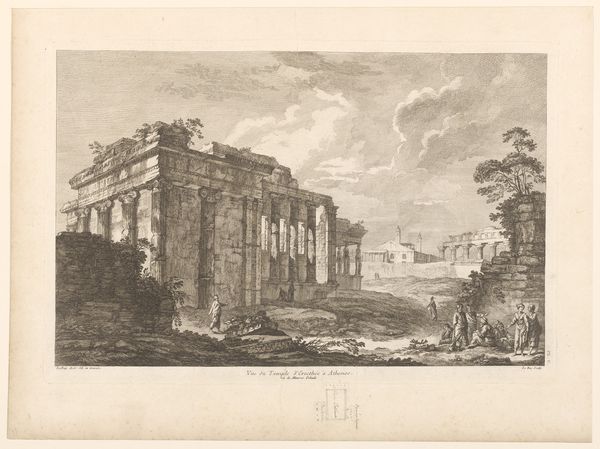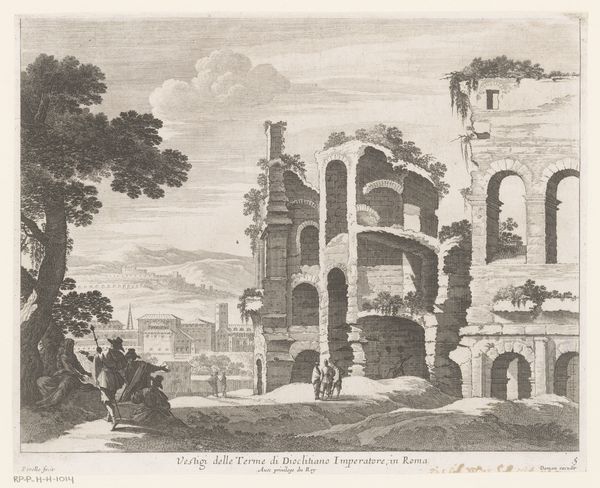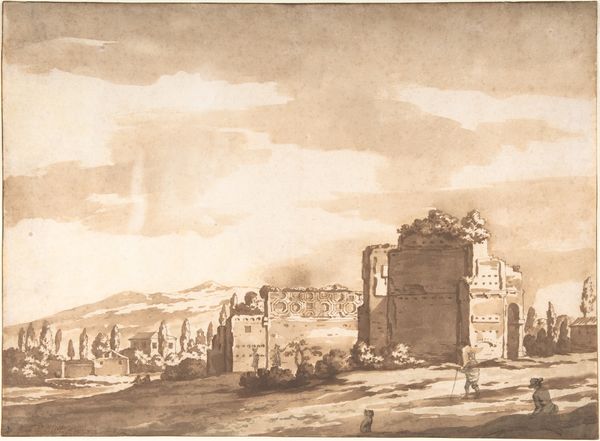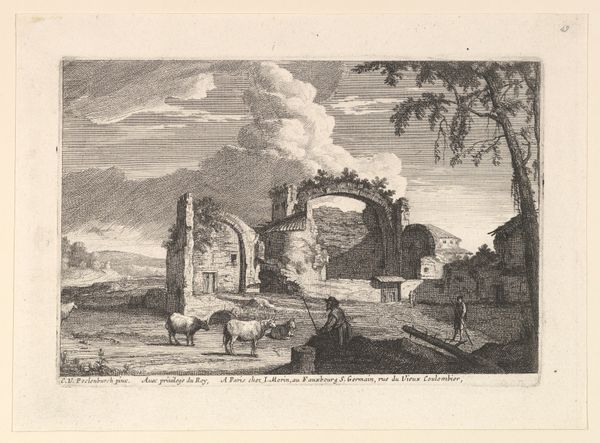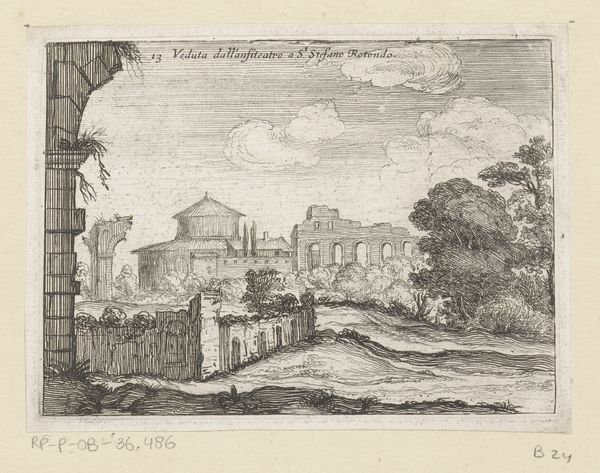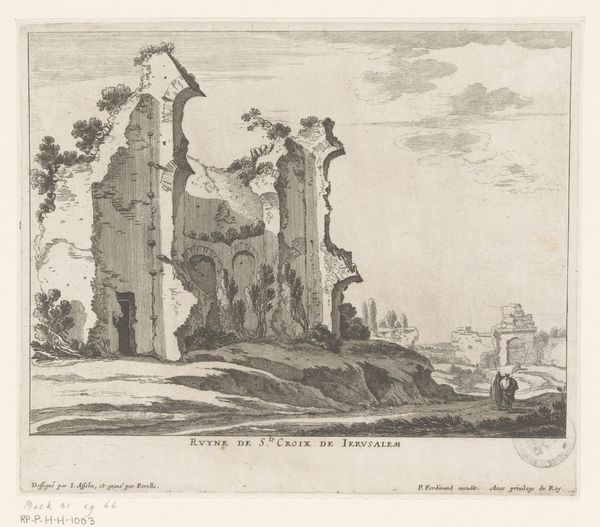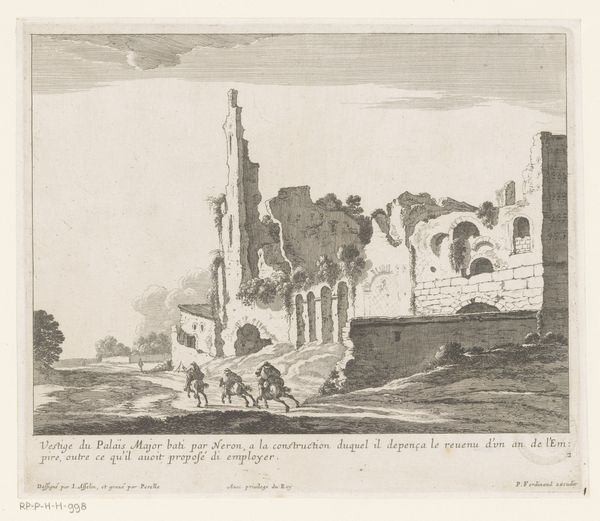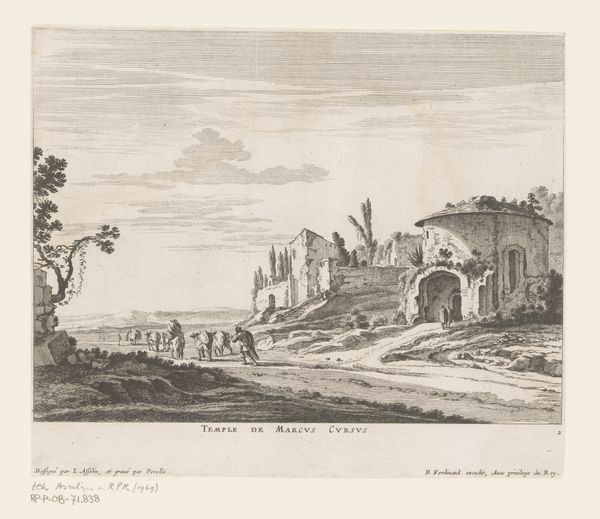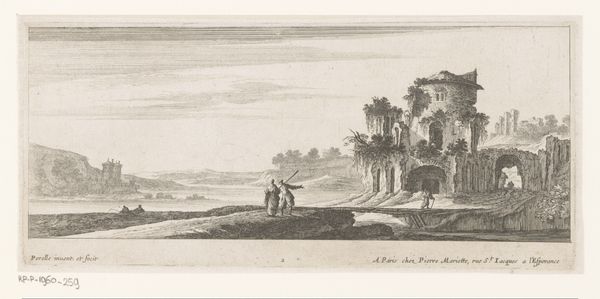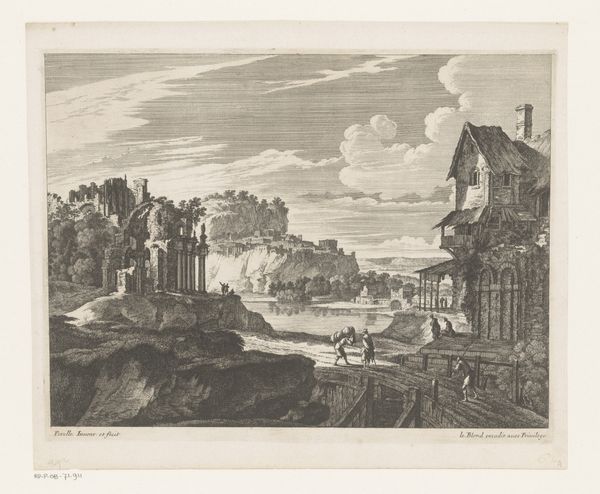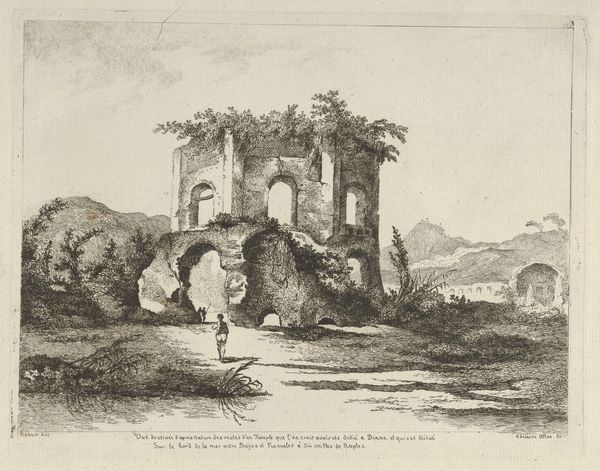
print, engraving, architecture
#
baroque
# print
#
landscape
#
romanesque
#
cityscape
#
history-painting
#
engraving
#
architecture
Dimensions: height 210 mm, width 252 mm
Copyright: Rijks Museum: Open Domain
Editor: This print, "Gezicht op de ruïnes van het Colloseum, te Rome" by Nicolas Perelle, was made sometime between 1641 and 1655, using engraving. The starkness of the monochrome palette emphasizes the Colosseum’s dilapidated state. How do you interpret this work from a formalist point of view? Curator: Precisely. We begin with the intrinsic elements. Note the strategic use of line: see how Perelle employs delicate hatching and cross-hatching to create areas of light and shadow? This modeling defines the ruined architecture, lending it a tactile, almost sculptural presence despite the print's two-dimensionality. How does the artist draw our eye through the composition? Editor: Well, the Colosseum dominates the foreground, but my eye is also drawn to the landscape and figures in the distance. There is definitely depth created by this contrast between the ruin, and the landscape, where line and shape is much softer. Curator: Yes, the artist created contrasts of tone and detail across the surface. Look closely: the intricate detail in the crumbling facade sharply contrasts with the open, airy rendering of the sky. Does that strategic arrangement affect your understanding? Editor: It does, because it makes me feel the immensity of the ruin. The high level of detail invites us to contemplate the Colosseum's gradual disintegration. Curator: The work's geometry and structure emphasize the enduring presence of the ruin amidst time's inevitable decay. I would also say that our consideration leads to a larger concept of artistic intentionality and creation. Editor: It's fascinating to see how analyzing the formal elements opens up new perspectives on historical depictions. Curator: Indeed. This close observation underscores the artist’s role in shaping meaning. We leave the audience not with a narrative of ruin, but with an admiration of aesthetic interpretation through artistic craft.
Comments
No comments
Be the first to comment and join the conversation on the ultimate creative platform.
